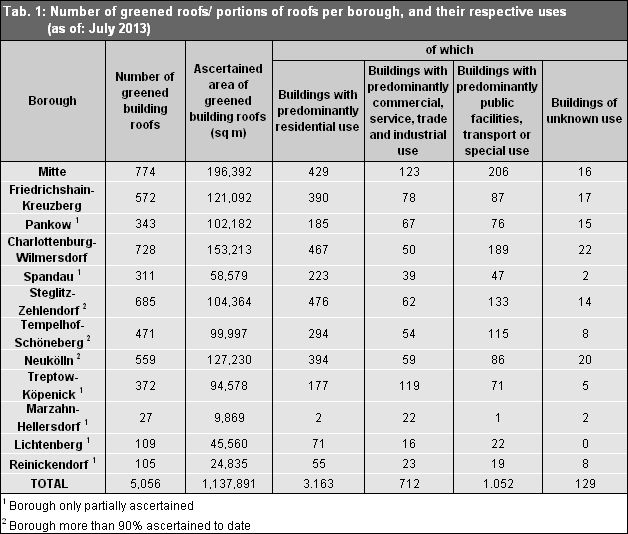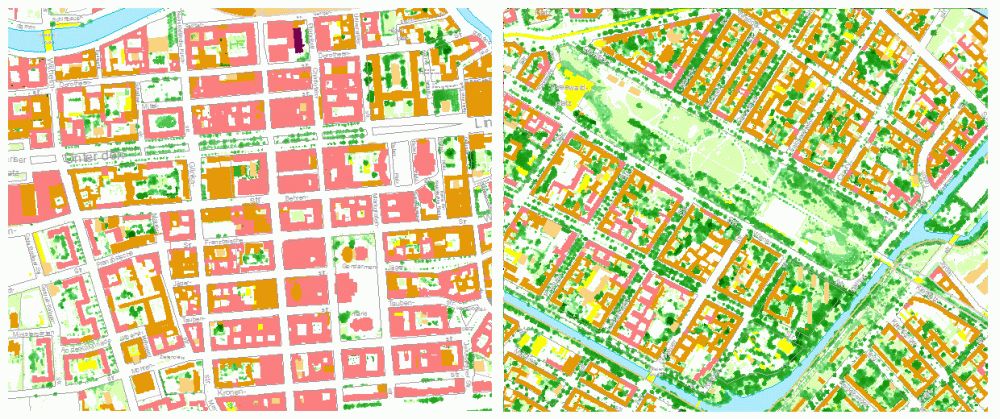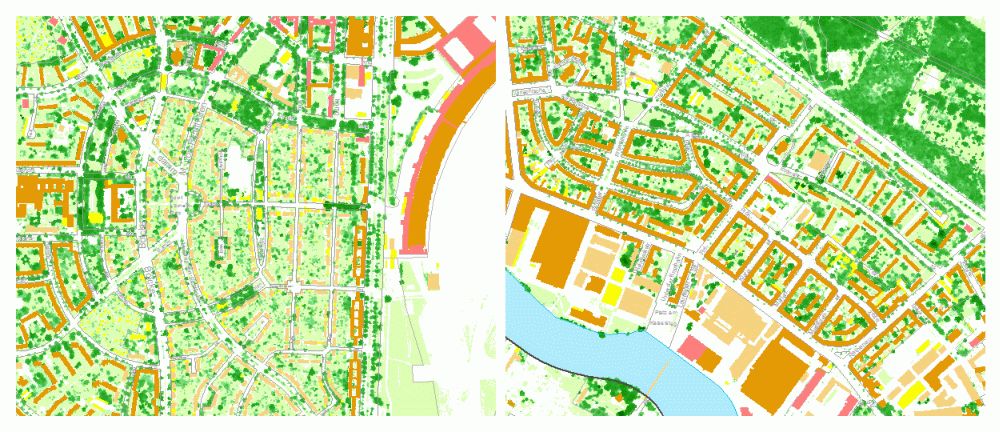For the first time, Berlin has a record of the “vertical extent” of the city which is largely very precise. In project Phase 1, an area of approx. 445 sq km, covering the entire inner city and also a large part of the southern half of the city, has been assessed. In project Phase 2, the assessment of the rest of the cities area and of the surrounding area of Berlin amounting to a total of 1,800 sq km, was also assessed. Especially with regard to vegetation, there is now a new and very suitable information base for many types of utilization.
Based on the ALK building outlines and their storey lines, amine height has been provided for each building portion. Mean height values are also provided for the vegetational items.
For the first time, roofs with a green component have been ascertained in this context, albeit, due to the data quality, they have been published only for the inner city area examined the Project Phase 1. In the context of the project, some 5,000 buildings with roofs which have been partially or completely greened have been “initially ascertained” with sufficient precision. Upon conclusion of the determination of the remaining areas of the city currently being processed, a complete overview of the city will be available. Table 1 gives an overview of the state of ascertainment of the area of Project Phase 1 (the inner city and the southern half of the city), broken down by borough.



